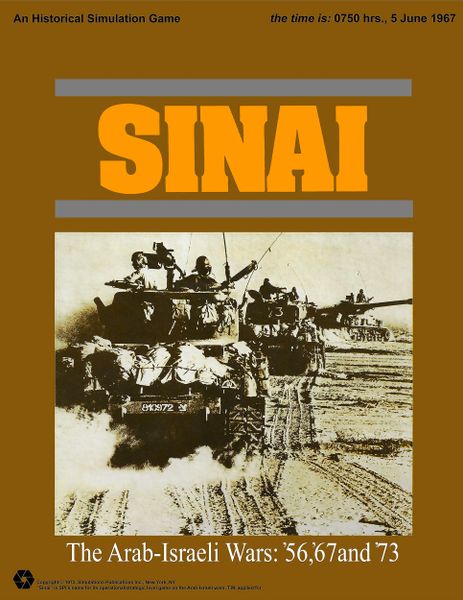Sinai: The Arab-Israeli Wars – ’56, ’67 and ’73 is a wargame that simulates the military conflicts between Israel and its Arab neighbors in the Sinai Peninsula during the years 1956, 1967, and
These wars were significant events in the history of the Middle East, shaping the geopolitics of the region for decades to come.Game Components of Sinai: The Arab-Israeli Wars – ’56, ’67 and ’73
Game Map: Represents the Middle East terrain, including clear terrain, roads, and rough terrain.Playing Pieces: Include Israeli and Arab units, differentiated by qualitative attributes and movement points.Unit Types: Mechanized units, infantry, and other specialized units.Rules Book: Detailed rules covering supply, overrun, Arab command control, airstrikes, and fortified settlements.Scenarios: Historical scenarios for 1956, 1967, and 1973, plus hypothetical and “what if?” scenarios.Dice and Charts: Arab Command Control Table, Combat Results Table (CRT), and other mechanics.
How To Setup Sinai: The Arab-Israeli Wars – ’56, ’67 and ’73
Setup involves placing units on the map according to the scenario being played. For the 1967 scenario, Israeli forces start at their historical positions, while Arab forces are placed based on their initial dispositions. The game includes specific setup instructions for each scenario, ensuring historical accuracy. Players must also determine Jordanian participation in the 1967 scenario through a dice roll.
Gameplay Mechanics and Game Objective
Supply Mechanics: Arab supply can only be traced over clear terrain and roads, while Israeli supply can be traced over any terrain available to mechanized units.Arab Command Control: Non-Jordanian Arab units are subject to a roll on the Arab Command Control Table, which can force them to retreat.Combat Results: No step losses or attritional results; units are eliminated through overrun or failure to retreat.Airstrikes: Israeli Air Force can interdict Arab movement.Victory Conditions: For the 1956 and 1967 scenarios, Israelis must achieve specific goals within a time limit. For the 1973 scenario, victory depends on geographical gains.Scenarios:1956: Focuses on the Sinai campaign with restricted movement for both sides.1967: Simulates the Six-Day War with significant Israeli advantages.1973: Reflects the Yom Kippur War with balanced gameplay and the introduction of SAMs.
Player Experience
The game offers a varied experience depending on the scenario. The 1967 scenario is highly favorable to the Israeli player, making it more suitable for solo play due to the restrictive rules on Arab units. The 1973 scenario provides a more balanced experience, making it engaging for both players. The game’s mechanics, such as the Arab Command Control rule, add unpredictability and challenge, especially in solo play.
Pros
Historical Accuracy: Simulates three significant Middle East conflicts with detailed historical scenarios.Operational-Level Simulation: Provides a comprehensive view of military operations during these conflicts.Engaging Solo Play: The 1967 scenario is particularly suited for solo play due to its restrictive rules on Arab units.Balanced 1973 Scenario: Offers a more even struggle with strategic choices for both players.
Cons
Unbalanced Scenarios: The 1956 and 1967 scenarios are heavily skewed in favor of the Israeli player.Simplistic Mechanics: Lacks modern wargame features like step losses and attritional combat.Limited Replayability: Certain scenarios, especially the 1956 one, may not offer compelling replay value.
Personal Thoughts on Sinai: The Arab-Israeli Wars – ’56, ’67 and ’73
This game is ideal for those interested in historical wargaming and the Arab-Israeli conflicts. While it may feel dated with its mechanics, it remains a solid operational-level simulation. The 1973 scenario offers the most engaging and balanced gameplay, making it a highlight of the game. For solo players, the 1967 scenario provides an intriguing puzzle-like experience. However, the game may not appeal to those seeking more complex and modern wargaming mechanics.
We are supported by our audience. When you purchase through links on our site, we may earn an affiliate commission, at no extra cost for you. Learn more.

